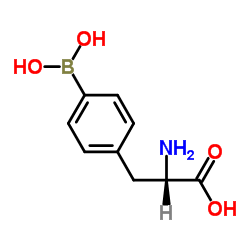T2 corrected quantification method of L-p-boronophenylalanine using proton magnetic resonance spectroscopy for boron neutron capture therapy.
Yohei Yamamoto, Tomonori Isobe, Tetsuya Yamamoto, Yasushi Shibata, Izumi Anno, Kei Nakai, Makoto Shirakawa, Akira Matsushita, Eisuke Sato, Akira Matsumura
Index: Appl. Radiat. Isot. 67(7-8 Suppl) , S345-7, (2009)
Full Text: HTML
Abstract
In the present study, we aimed to evaluate a T2 corrected quantification method of l-p-boronophenylalanine (BPA) concentration using proton magnetic resonance spectroscopy (MRS). We used five phantoms containing BPA (1.5, 3.0, 5.0, 7.5, and 10 mmol/kg=15, 30, 50, 75, and 100 microg(10)B/g), N-acetyl-aspartic acid (NAA: 3.0 mmol/kg), creatine (Cr: 5.0 mmol/kg), and choline (Cho: 3.0 mmol/kg). The signal intensities of BPA and internal water were corrected by T2 relaxation time. The absolute concentrations of BPA were calculated by proton MRS using an internal water signal as a standard. The major BPA peaks were detected between 7.1 and 7.6 ppm. Mean T2 relaxation time was 314.3+/-10.8 ms in BPA, 885.1+/-39.7 ms in internal water. The calculated BPA concentrations were almost same as the actual concentration of BPA and the correlation coefficient was 0.99. Our BPA quantification method was very simple and non-invasive, also it had high accuracy. Therefore, our results indicate that proton MRS can be potentially useful technique for in vivo BPA quantification in boron neutron capture therapy (BNCT).
Related Compounds
| Structure | Name/CAS No. | Molecular Formula | Articles |
|---|---|---|---|
 |
4-Borono-L-phenylalanine
CAS:76410-58-7 |
C9H12BNO4 |
|
Pharmacokinetic analysis and uptake of 18F-FBPA-Fr after ult...
2014-04-01 [J. Nucl. Med. 55(4) , 616-21, (2014)] |
|
Low dose of gamma irradiation enhanced boronophenylalanine u...
2011-12-01 [Appl. Radiat. Isot. 69(12) , 1728-31, (2011)] |
|
Boron neutron capture therapy induces apoptosis of glioma ce...
2010-01-01 [BMC Cancer 10 , 661, (2010)] |
|
Studies for the application of boron neutron capture therapy...
2011-12-01 [Appl. Radiat. Isot. 69(12) , 1752-5, (2011)] |
|
Boron neutron capture therapy for clear cell sarcoma (CCS): ...
2011-12-01 [Appl. Radiat. Isot. 69(12) , 1721-4, (2011)] |